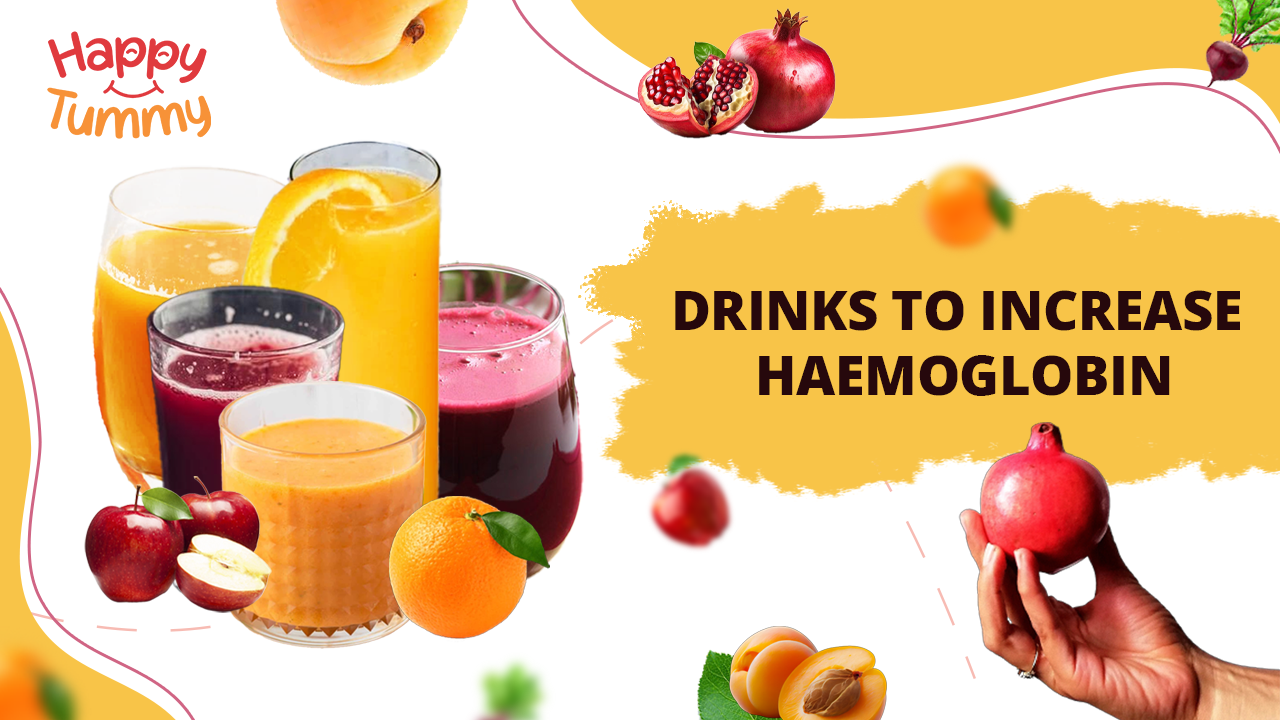Table of Contents
Following a balanced diet may be difficult in a busy schedule, leading to deficiencies and disorders. Paying attention to health is equally important, as “Health is Wealth.” Low levels of haemoglobin may impact the quality of life.
Read further to learn more about the symptoms of low haemoglobin levels and 7 drinks to increase haemoglobin.
What is Haemoglobin?
Haemoglobin is a key protein present in red blood cells that transports oxygen to the body. It consists of four sub-units of protein.
Each haemoglobin molecule comprises four heme groups and an organic compound, which also has an iron atom attached to it. This iron atom enables Haemoglobin to bind oxygen and transport it to organs and tissues.
The presence of iron in haemoglobin gives red blood cells their distinctive red colour. In addition to oxygen delivery, haemoglobin also allows the release of carbon dioxide, a waste product of metabolism, from the tissues to the lungs, from where it is expelled. [1]
Factors that Affect Haemoglobin Level
There are several factors that may affect the haemoglobin level in the blood.
- Eating Habit – The dietary habits of an individual has a major role in maintaining the levels of haemoglobin in their body. A deficiency of essential vitamins and minerals in the body like Iron, Vitamin B12, & Folate may lead to lower levels of haemoglobin. There may be many other factors, too, along with inappropriate dietary intake that could impact the haemoglobin level. [2]
- Chronic disease/ Health Condition – The production of red blood cells may be affected if an individual possesses a severe health condition like kidney disease or blood disorders like anaemia, thalassemia, and aplastic anaemia. Other health conditions like blood loss may also contribute to lower haemoglobin levels. [3]
- Increase in Demand– Increased iron demands during adolescence and pregnancy are seen, which, if not met, leads to low haemoglobin levels. [4]
- Lifestyle—In addition to inadequate dietary intake, Factors such as poor nutritional status, sedentary lifestyle, dehydration, etc. may also affect the levels of haemoglobin in the blood.
- Genes – Genetic factors also play an important role in determining one’s haemoglobin levels. For example, thalassemia, a genetic disorder that may be inherited by some individuals [5], affects your body’s ability to produce haemoglobin and Healthy Red Blood Cells.
- Demographic Factors – Factors like age, gender, geographic location, etc., may also affect the level of haemoglobin.
Symptoms of Low Haemoglobin Levels
Having a lower level of haemoglobin may cause certain symptoms that may hinder an individual’s daily routine. Some of them are listed below. [6] [7]
- Dizziness – Dizziness or light-headedness may be a common symptom if experiencing low haemoglobin levels.
- Paler Skin – The colour of the skin may change slightly to yellow and appear paler along with nails becoming brittle as the level of red blood cells may get reduced. Eye discolouration may also be seen in some cases.
- Difficulty in Breathing – Shortness of breath may be another significant symptom of low haemoglobin level, as the oxygen-carrying capacity may be affected.
- Mood Swings—Some individuals with reduced levels of iron and haemoglobin in the bloodstream may also experience mood swings or irritability.
#7 Drink to Increase Haemoglobin
1. Beetroot & Carrot Juice
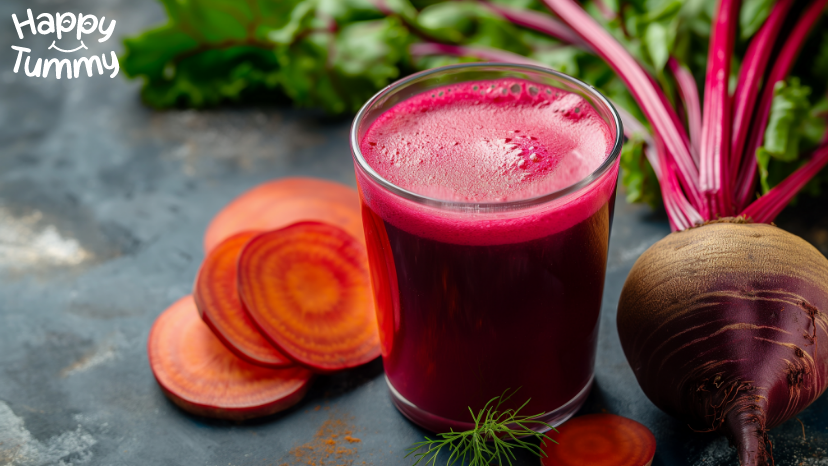
Beetroot may play an important role in increasing the haemoglobin in blood as it is high in iron, folic acid, vitamin C, magnesium, and many more important vitamins and minerals.
Since ancient times, it has been considered an important source of increasing haemoglobin levels. Beetroot may also help regenerate red blood cells and supply fresh oxygen to the body. The iron in beetroot is easiest to absorb into the bloodstream, making it a wonderful option for those with low haemoglobin levels. [15]
Iron is very important for increasing the production of red blood cells so beetroot may help in better circulation of oxygen as it is rich in iron.
The presence of carrot in the juice may not only add a distinct flavour but also be rich in trace mineral Molybdenum, which is uncommon in vegetables. This adds as an added benefit because Molybdenum is also necessary for iron absorption. [16]
The following table represents the nutritional profile of beetroot. [8]
| Nutrient | Per 100gm |
| Iron | 0.76mg |
| Magnesium | 33.21mg |
| Zinc | 0.30mg |
| Total Dietary Fibre | 3.31g |
| Protein | 1.95g |
| Carbohydrate | 6.18g |
| Energy | 35.61Kcal |
Recipe
Ingredients
- Beetroot – 1
- Carrot – ½
- Water
- Lemon – 1 tsp
- Salt to taste
Method
- Thoroughly wash and peel the beetroot and carrot.
- Take a blender and add the peeled beetroot and carrot along with the desired amount of water.
- Blend it properly and strain it in a glass.
- Sprinkle black salt to taste, along with 1 teaspoon of lemon juice.
- Enjoy the healthy yet refreshing drink.
2. Spinach Apricot Smoothie
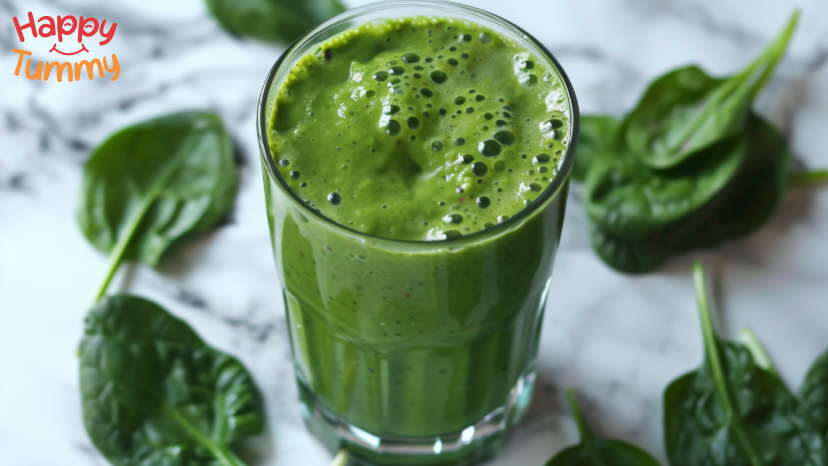
Spinach, a very commonly used leafy green benefits may also contribute to increasing the haemoglobin level.
The high iron content may play a vital role in oxygen mobilization, increasing the count of red blood cells, which may eventually facilitate better management of haemoglobin count. When mixed with apricot, it is an alkaline smoothie with natural proteins and greens.
Consuming spinach juice in moderation alongside a balanced diet may help in tackling some blood-related issues. To get a better idea of when to consume this juice you may get assistance at My Meal Plan by Aashirvaad.
The following table represents the nutritional profile of spinach. [9]
| Nutrient | Per 100gm |
| Iron | 2.95mg |
| Magnesium | 86.97mg |
| Zinc | 0.46mg |
| Total Dietary Fibre | 2.38g |
| Protein | 2.14g |
| Carbohydrates | 2.05g |
| Energy | 24.37Kcal |
Recipe
Ingredients
- Spinach – 2 cups
- Celery – 1 stalk
- Apricot – ½
- Water
Method
- Finely chop the spinach, celery, and pear after washing it.
- Take a blender jar and add the chopped vegetables along with water.
- Blend it properly and pour the juice into a glass.
- Add lemon juice and enjoy.
3. Pomegranate & Soaked Raisin Juice
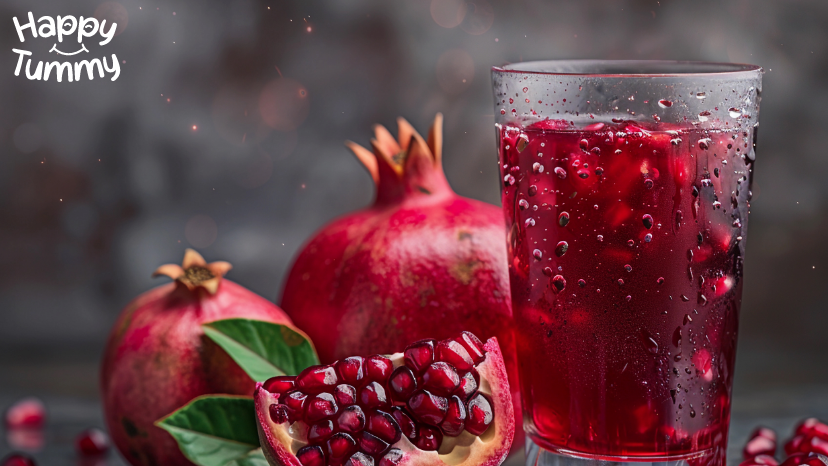
Pomegranate may also be a good option to include in your diet to increase haemoglobin levels. Several studies conducted have reported that Pomegranate may have a potential role to play in increasing haemoglobin concentration as well as RBC count.
This is because Pomegranate not only contains iron but also is rich in Vitamin C (12.69mg/100gm), which helps in the better absorption of iron.
Adding raisins to this juice will not only enhance the flavour but also support the increase of haemoglobin count, as raisins are also a valuable source of iron (6.81mg/100g)
Consuming pomegranate juice may be a convenient option as it is easy to prepare. The quick recipe below may help,
The following table represents the nutritional profile of pomegranate. [10]
| Nutrient | Per 100gm |
| Iron | 0.31mg |
| Magnesium | 11.07mg |
| Zinc | 0.18mg |
| Total Dietary Fibre | 2.83g |
| Protein | 1.33g |
| Carbohydrates | 11.58g |
| Energy | 54.73Kcal |
Recipe
Ingredients
- Pomegranate seeds – 1 cup
- Water
Method
- Take a blender jar and blend the pomegranate seeds along with water.
- Strain it into the glass and enjoy.
[Note – You may use a juicer to extract the pomegranate juice, based on the availability.
4. Hibiscus Tea
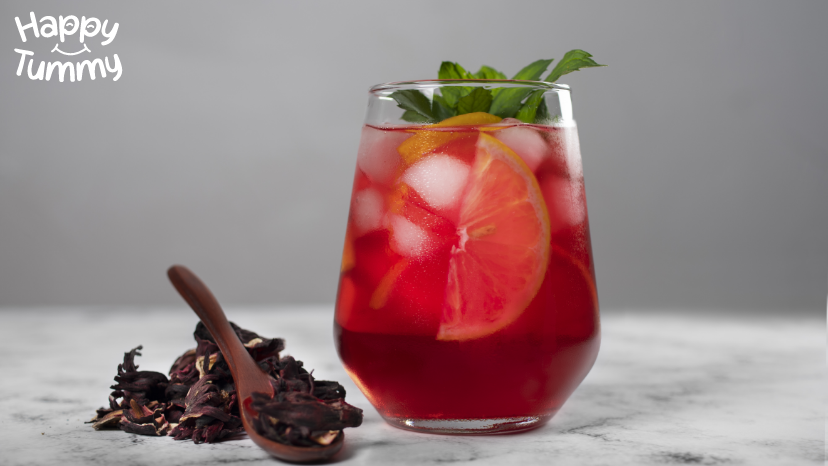
Hibiscus tea may be a good option as it is packed with iron made from the dried petals of the Hibiscus sabdariffa flower.
Hibiscus tea contains many antioxidants, such as phenolic acids and flavonoids, which may shield red blood cells from oxidative damage, maintain haemoglobin count, and may promote cardiovascular health in general.
The following table represents the nutritional profile of hibiscus. [15]
| Nutrient | Per 100gm |
| Iron | 1.21mg |
| Protein | 2.68g |
| Carbohydrates | 0.89mg |
| Energy | 16Kcal |
Recipe
Ingredients
- Hibiscus petals
- Water
- Lemon juice
- Sweeteners like honey
Method
- Boil some water and add hibiscus tea leaves to it.
- Let it simmer for 4-5 minutes, and then strain it into the cup.
- Add sweeteners or lemon juice to it, and enjoy.
5. Amla and Pumpkin Leaves Juice
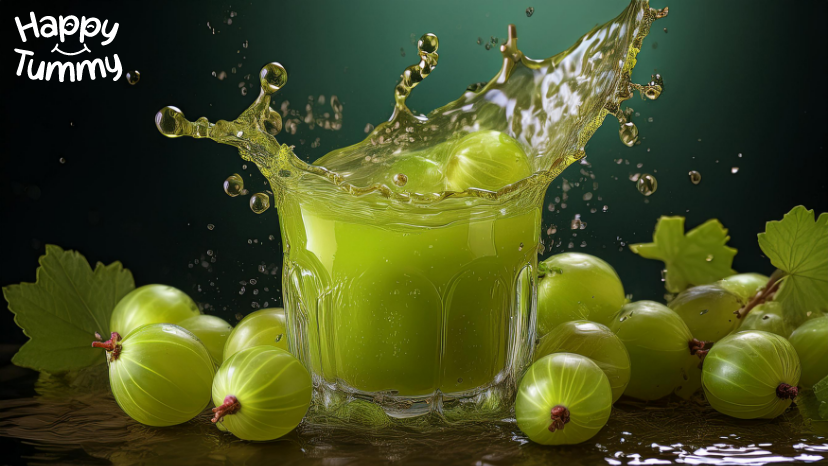
This drink may help boost haemoglobin levels and RBC Counts. Amla is known as a powerhouse of vitamin C, which facilitates the absorption of iron. A 100 grams of Pumpkin leaves contains 5.58mg of iron.
To enhance the flavour of this drink, you may also add jaggery, which is also an excellent source of iron(4.63mg/100g), thus helping to improve the haemoglobin level.
The following table represents the nutritional profile of Pumpkin leaves. [16]
| Nutrient | Per 100gm |
| Iron | 5.58mg |
| Magnesium | 84.21mg |
| Zinc | 0.90mg |
| Total Dietary Fibre | 2.25g |
| Protein | 4.21g |
| Carbohydrates | 4.75 |
| Energy | 20.31Kcal |
Recipe
Ingredients
- Pumpkin leaves
- Amla
- Jaggery
- Water
Methods
- Slice ½ Kg of fresh amla into small pieces and blend well.
- This pulp is mixed with ¼ litre of boiled and cooled water, and use a sieve to strain it.
- Pumpkin leaf extract was prepared by placing two medium-sized leaves in a blender, adding 50 ml of water, blending well and straining out the juice.
- Jaggery syrup was prepared by melting one Kg of jaggery in 250 ml of water.
- Add the amla (250 ml) and pumpkin (50 ml) leaves extract to the jaggery syrup and enjoy.
6. Prune Juice
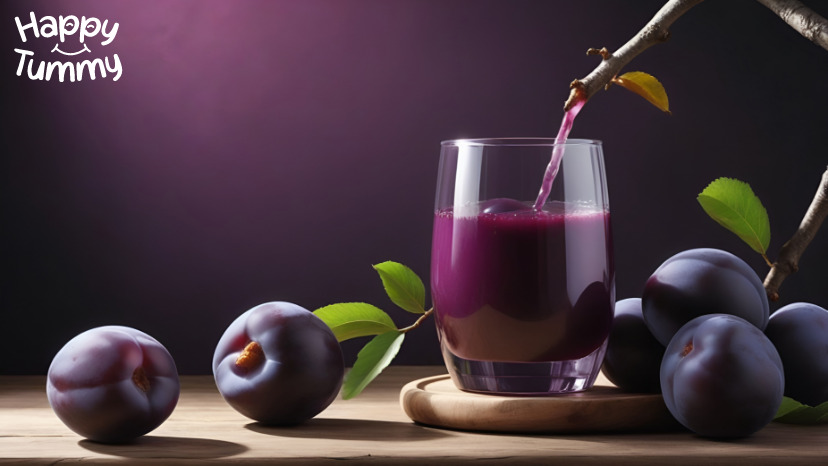
Follow the following recipe to make prune juice that may help in increasing the haemoglobin level.
Recipe
Ingredients
- Dried prunes – 1 cup
- Water as required
- Honey
Methods
- Soak the prunes overnight.
- Take a blender jar and blend the soaked prunes along with water.
- Pour it into a glass and add honey to it.
7. Date Smoothie
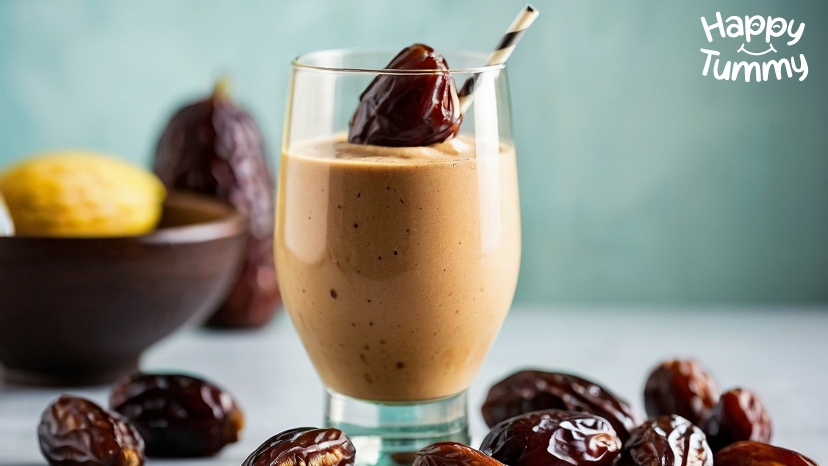
Dates may fulfill the demand of iron and some other nutrients such as Zinc & Potassium in our body required to maintain the haemoglobin level. They may improve hemoglobin (Hgb) levels by increasing erythrocyte production.
Consuming a balanced diet along with this smoothie may help in maintaining good overall health.
Dates may also aid in maintaing electrolyte balance as it is rich in potassium, which may also be necessary for regulating ideal blood pressure.
The following table represents the nutritional profile of dates. [14]
| Nutrient | Per 100gm |
| Iron | 3.20mg |
| Magnesium | 73.79mg |
| Zinc | 0.70mg |
| Protein | 2.45g |
| Total Dietary Fibre | 8.95g |
| Carbohydrates | 74.9g |
| Energy | 320.26Kcal |
Recipe
Ingredients
- Banana – ½
- Soaked dates – 2-3
- Almond milk
- Nuts – optional
Methods
- Take a blender jar and add soaked dates along with banana and almond milk.
- Blend it to the desired consistency.
- Serve it in a glass and top it up with nuts, if preferred.
- Enjoy the healthy and tasty smoothie.
Note:
Avoid storing any of the above-mentioned juice; freshly prepare it before drinking.] It is advised to consume along with fibre, i.e. without straining the juice, as it aids in better digestion.
You shall consult a healthcare professional, before consuming these drinks if you are a diabetic or have any kind of restrictions in your diet.
Additional Tips to Maintain the Haemoglobin Level
- Exercise
- Balanced diet
- Proper hydration
- Limiting caffeine intake
Final Words
The bottom line is that maintaining a certain level of haemoglobin is essential as it may increase and improve the circulation of oxygen. Low haemoglobin levels may cause some symptoms. All the drinks listed may help increase the level of haemoglobin naturally.
However, it is advised to consult a dietician once before making any major change in your diet and avoid any food if there is a history of allergy.
FAQs
There are several ways that may help in increasing the haemoglobin level naturally. Exercising, following a balanced diet, limiting caffeine intake, etc. may help in serving the purpose. Individuals may also try healthy drinks like spinach juice, beetroot juice, dates smoothie, hibiscus tea, etc., to help maintain the haemoglobin.
Observing symptoms like dizziness, paler skin, cold hands, feet, etc. may be some of the common symptoms of low haemoglobin. However, it is advised to undergo a blood test after consulting the doctor for accurate results.
Beetroot may play an important role in increasing the haemoglobin in blood as it is high in iron, folic acid, vitamin C, magnesium, and many more important vitamins and minerals. Since ancient times it has been considered an important source to increase haemoglobin levels.












